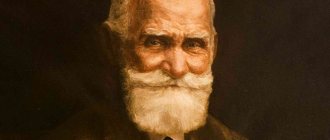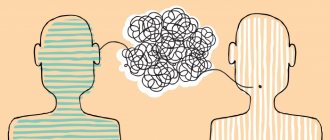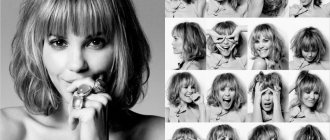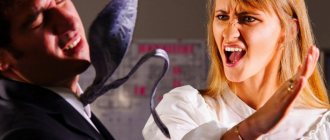CONDITIONED REFLEX.
A term that was first used by Russian physiologist I.P. Pavlov to describe an acquired reflex, i.e. which is not (unlike an unconditioned reflex) innate, and therefore characteristic of an individual, and not all representatives of a given species. When lemon juice hits the tongue, saliva is released - this is an unconditioned reflex. However, saliva can also be released at the sight of a lemon or at the sound of the word “lemon” - this is a conditioned reflex. The difference is that the sight of lemon or the sound of the word does not always cause salivation and, in addition, may not have an effect on certain people. Such stimuli acquire the ability to produce a response only after they have been presented more or less simultaneously with the stimulation of the taste buds by lemon juice. The sight of a lemon or the sound of the word “lemon” in this case turns out to be conditioned (signal) stimuli that replace the unconditioned stimulus – lemon juice.
What is a conditioned reflex?
A conditioned reflex is an acquired reflex, characteristic of an individual, and not genetically fixed (i.e., not inherited). The formation of such reflexes depends on the conditions of their occurrence, which was the reason for the appearance of the name of the group. The foundation for their appearance is the presence of a connection between the emerging stimulus and the unconditioned reflex act, which serves as reinforcement for it. In this case, the connection has a certain time frame. The brain, both its cortex and the formations located under it, are responsible for the generation and manifestation of reflexes.
One of the first scientists to seriously study this topic and propose the definition of “conditioned reflex” in 1903 was the Russian physiologist I.P. Pavlov.
Biologically, the reflex is intended to transform external stimuli of a neutral nature into a set of significant signals that adapt the behavioral characteristics of the organism to current conditions. In fact , they ensure the body’s adaptation to emerging phenomena in order to generate useful behavior and eliminate negative effects on the body. Conditioned reflexes provide adaptation to both natural influences and the actions of the individual’s social environment.
Conditioned reflexes,
individually acquired complex adaptive reactions of the organism of animals and humans, arising under certain conditions (hence the name) based on the formation of a temporary connection between a conditioned (signal) stimulus and an unconditioned reflex act that reinforces this stimulus (see
Reflexes
)
.
Carried out by the higher parts of the central nervous system - the cerebral cortex and subcortical formations;
are formed in the process of ontogenesis on the basis of unconditioned reflexes.
The term "U.
R." proposed in 1903 by I. P. Pavlov.
The study of this phenomenon led Pavlov to the creation of a conditioned reflex theory of animal and human behavior and a new doctrine of brain functions - the physiology
of higher nervous activity.
Study of the patterns of formation and characteristics of U. r. promotes objective knowledge of the functioning of the brain. There are many methods for studying U. r., but the most famous of them is the method of salivary food U. r. makes it possible to simply and accurately evaluate them as they are developed. And although modern electrophysiological, neurochemical, psychopharmacological and other methods for analyzing brain activity have contributed a lot to the development of the conditioned reflex theory, the basic principles formulated by Pavlov on the basis of the study of salivary Ur. remain unshakable to this day and serve as the foundation for new research.
Conditioned stimulus
there can be any change in the state of the external and internal environment that is perceived
by receptors.
In the initial period of education (the so-called period of generalization) U. r.
is of a general nature, because the same reaction occurs to many signals. Later, it becomes more specialized, selective, durable and constant in magnitude, and only one signal out of many or stimuli close to it is capable of causing an adequate response. If the conditions of formation are violated, U. r. changes parameters or completely fades away. Variability is the most characteristic feature of U. r. – ensures active balancing of the body with the external environment. A conditioned signal that inaccurately, incorrectly informs about events in the external environment, loses the property of a trigger signal for organizing a behavioral act, and the reaction to it fades away. This phenomenon is based on internal inhibition,
which allows one to subtly differentiate stimuli according to their physiological and biological properties and helps to get rid of impulses that have ceased to be useful in a biological sense.
Classification of U. r.
Internal inhibition, which forms in the elements of the conditioned connection itself, underlies the division of all control systems. into positive and negative. With positive (reinforced) U. r. a conditioned signal causes excitement and certain activities of the body (for example, food), while in the case of negative (unreinforced) ones, it inhibits it due to the development of internal inhibition. Depending on the stimulus to which the reflex is produced, a distinction is made between natural and artificial U. r. Natural U. r. are developed in response to the natural properties of unconditional reinforcement (such as the sight and smell of food), which have biological significance for the animal. Artificial U. r. are produced in response to stimuli that are initially not associated with reinforcement (for example, a bell, light, metronome). In accordance with the biological significance of unconditional reinforcement, U. R. are distinguished. food related to obtaining, receiving and assimilating food; protective (defensive), etc. According to the characteristics of the response reactions of U. r. divided into vegetative and somatomotor. Depending on the structure of conditioned stimuli and on the relationship in time of action of the conditional and unconditional components, as well as on the characteristics of reinforcement, and on the time of response to the signal, control systems are distinguished: 1) first order, formed on the basis of unconditional ones; 2) higher order (2nd, 3rd, etc.), arising on the basis of previously developed temporary connections; 3) imitative, in which the behavioral reactions of another animal serve as reinforcement; 4) associations when U. r. appears when two indifferent stimuli are combined; 5) instrumental, by performing which the animal helps actively obtain food or relieves itself of harmful effects (for example, pain). With this form of U. r. the response to the signal does not reproduce the reaction on the basis of which it was developed.
To form U. r. a fairly high level of organization of the central nervous system is required.
Thus, invertebrates are characterized by individually acquired forms of behavior that are not identified with conditioned reflex ones. Almost true U. r. are produced in vertebrates: fish, amphibians, reptiles, birds and mammals. U.r. higher order ones are formed with difficulty, which depends on the level of organization of the living organism. A dog can develop U. r. up to the 5th, 6th order, in a monkey - up to 10–12th order, in humans, the basis of his abstract thinking is the ability to form U. r. 20th and higher order. An example of such complex reactions can be, for example, working on various devices, operating machines, and other labor and motor acts, often associated with speech.
Mechanism of U. r.
In the process of conditioned reflex activity, analysis and synthesis of irritations from the external and internal environment are constantly carried out.
Analysis of irritation consists of distinguishing, separating signals, differentiating effects on the body. The synthesis of stimuli manifests itself in the binding, generalization, and unification of excitations that arise in various parts of the cerebral cortex as a result of the interaction established between neurons and their groups. The processes of analysis and synthesis are interconnected and proceed in parallel, constituting the main function of the brain. An example of the analytical-synthetic activity of the cerebral cortex is the formation of a dynamic stereotype,
in which several temporary connections are combined into a functional system.
The cortex fixes a certain order of stimuli and the corresponding reactions, which facilitates its work when performing a stereotypically repeating system of reflexes. The mechanism of formation of U. r. is based on the process of closing a neural connection between two simultaneously excited points of the brain. A detailed analysis of the nervous mechanism of conditioned reflex communication using sophisticated modern techniques of electroencephalography, evoked potentials, and the study of neural activity confirmed Pavlov’s conclusion about the cortical mechanism of the closure of U. r. According to the hypothesis of P.K. Anokhin,
under the action of conditioned and unconditioned stimuli, generalized activation of the cortex occurs, followed by convergence of ascending excitations on the same neurons.
As a result of interaction at the cellular level of existing and trace processes of excitation, temporary connections arise and are consolidated. At the heart of every U. r. lies a special functional organization of groups of neurons, capable of reproducing traces of previous stimulation in response to a conditioned signal. It was assumed that excitation
from one group of cortical cells that perceive a conditioned signal is transmitted to another only along horizontal nerve fibers passing through the cortex.
However, further studies of owls. scientists E. A. Asratyan,
I. S.
Beritashvili,
A. B. Kogan, M. M. Khananashvili, N. Yu. Belenkov showed that a new functional connection can occur along another path: cortex - subcortex - cortex.
In addition to the cortex, many subcortical formations, for example, the reticular formation,
hippocampus, basal ganglia, and
hypothalamus,
are involved in the formation of U. r.
Education and consolidation of U. r. accompanied by the emergence of a new reflex arc,
consisting of afferent, central and efferent parts.
Information about the results of a completed action enters the brain via a feedback
.
An infinite set of U. r. largely determines the complex behavior of animals. They ensure the active adaptation of the body to the external environment. Based on many indirect signs that have acquired signaling significance, the animal learns in advance about the upcoming danger or signs of food and therefore constructs its behavior most adequately. Production of U. r. the highest order is a synthesis of 2 temporary connections, in which inhibition of the central and efferent parts of the arc of the first U. R. occurs. The afferent part of it is included in the newly formed reflex. Higher levels of integration follow a similar mechanism. Formation of complex behavioral acts from U. r. appears as an integrative process. This hypothesis of Asratyan is based on ideas about the reflex nature of individually acquired behavioral acts. Basic patterns and principles of the formation of elementary and complex control systems. - common to animals and humans. From this follows an important conclusion of natural scientific and philosophical significance that the human brain obeys general biological laws and is accessible to objective study. At the same time, the activity of the human brain has qualitative specificity and is fundamentally different from the conditioned reflex activity of animals. This specific difference is due to the presence of two signaling systems in humans (see First signaling system, Second signaling system
)
.
Lit.:
Kogan A. B., Electrophysiological study of the central mechanisms of some complex reflexes, M., 1949; Pavlov I. P., Complete. collection tr., t. 3, M. - L., 1949; Belenkov N. Yu., Conditioned reflex and subcortical formations of the brain, M., 1965; Anokhin P.K., Biology and neurophysiology of the conditioned reflex, M., 1968; Beritov I. S., Structure and functions of the cerebral cortex, M., 1969; Asratyan E. A., Essays on the physiology of conditioned reflexes, M., 1970; Konorski Yu., Integrative brain activity, trans. from English, M., 1970; Physiology of higher nervous activity, parts 1–2, L., 1970–71; Livanov M. N., Spatial organization of brain processes, M., 1972; Electrical activity of the brain during the formation of simple forms of temporary communication, M., 1972; Milner P., Physiological Psychology, trans. With. English, M., 1973; Dmitriev A. S., Physiology of higher nervous activity, M., 1974; Rudenko L.P., Functional organization of elementary and complex forms of conditioned reflex activity, M., 1974; Pribram K., Languages of the brain, trans. from English, M., 1975.
N. F. Suvorov.
Table of contents
Examples of conditioned reflexes
The most striking example of a conditioned reflex is the secretion of saliva in pets at the sound of a food bowl. Similar processes can be developed in humans. The condition for their occurrence is the high repeatability of situations with the coincidence of two processes, for example, hitting a bowl and placing food in it.
Similarly, in animals, the reaction to a bell will be to flex the paw if the procedure in which the operation of the bell coincided with the effect of an electric current on the animal, stimulating the flexion reflex of the paw, has been previously repeated many times.
For a child, a conditioned reflex in the form of withdrawing his hands from fire is common, but it will develop only if the child has previously received a burn, and the body is protected from the recurrence of negative effects on it.
Phylogenetic development of unconditioned reflexes
According to the well-known position of I.P. Pavlov, unconditioned reflexes are a consequence of the consolidation by natural selection and heredity of those reactions acquired over thousands of years that correspond to repeated environmental factors and are useful for a given species.
There is reason to assert that the most rapid and successful adaptations of the organism may depend on favorable mutations, which are subsequently selected by natural selection and are already inherited.
See also Higher nervous activity, Instinct, Reflex, Conditioned reflex.
Bibliography:
Anokhin P.K. Biology and neurophysiology of the conditioned reflex, M., 1968, bibliogr.; Afferent link of interoceptive reflexes, ed. I. A. Bulygina, M., 1964; Vedyaev F. P. Subcortical mechanisms of complex motor reflexes, L., 1965, bibliogr.; Vinogradova O. S. Orienting reflex and its neurophysiological mechanisms, M., 1961, bibliogr.; Groysman S. D. and Dekush P. G. An attempt at a quantitative study of intestinal reflexes, Pat. physiol. and Experiment, ter., v. 3, p. 51, 1974, bibliogr.; Orbeli L. A. Questions of higher nervous activity, p. 146, M.-L., 1949; Pavlov I.P. Complete works, vol. 1-6, M., 1951 - 1952; Petukhov B. N. Closure after loss of basic unconditioned reflexes, Proceedings Center, Institute of Improvements. doctors, vol. 81, p. 54, M., 1965, bibliogr.; Salchenko I. N. Hidden periods of myotatic reflexes that ensure motor interactions of people, Physiol. person, vol. 1, no. 2, p. 317, 197 5, bibliogr.; Sechenov I. M. Reflexes of the brain, M., 1961; Slonim A.D. Fundamentals of general economic physiology of mammals, p. 72, M,-L., 1961, bibliogr.; Human Physiology, ed. E. B. Babsky, p. 592, M., 1972; Frankstein S.I. Respiratory reflexes and mechanisms of shortness of breath, M., 1974, bibliogr.; Shustin N.A. Analysis of unconditioned reflexes in the light of the doctrine of the dominant, Physiol, journal. USSR, vol. 61, JSft 6, p. 855, 1975, bibliogr.; Human reflexes, pathophysiology of motor systems, ed. by JE Desment, Basel ao, 1973; Mechanisms of orienting reactions in man, ed. by I. Ruttkay-Nedecky ao, Bratislava, 1967.
Distinctive features of conditioned reflexes
- Absent in newborns. The unconditioned reflex is inherent in nature, while the conditioned reflex is acquired and individual.
- The development of such reflexes is the prerogative of the higher department of the central nervous system.
- They can be temporary in cases where the stimulus does not have unconditional reinforcement.
- Conditioned reflexes are not fixed genetically, i.e. are not inherited;
All conditioned reflexes are divided into two component categories: natural and artificial. The first include the natural properties of the stimulus, for example, the type of fire. The second includes reflexes to stimuli that do not have a direct connection with the action, for example, the operation of a light bulb for Pavlov’s dog.
Research by I.M. Sechenov
Ivan Mikhailovich Sechenov (1929–1905) – physiologist, naturalist, physician, a person who made a significant contribution to the development of psychology. Sechenov presented a program for the construction of psychology simultaneously with V. Wundt. He can be considered the founder of Russian scientific psychology.
The initial natural scientific premise is the reflex theory of I.M. Sechenov has a position on the unity of the organism and the environment, on the active interaction of the organism with the outside world. This position constituted the first general biological prerequisite for Sechenov’s discovery of brain reflexes . Conditioned by external influences, the reflex activity of the brain is the “mechanism” through which an organism that has a nervous system communicates with the outside world.
The brain reflex is, according to Sechenov, a learned reflex, that is, not innate, but acquired during individual development and depending on the conditions in which it is formed.
The second physiological prerequisite for the reflex theory was Sechenov’s discovery of central inhibition. It was the first step towards the discovery of the internal patterns of brain activity.
Central inhibition is a special mechanism in the brain that suppresses or suppresses reflexes, that is, the body’s response to external influences. The effect of reflex inhibition was discovered in numerous experiments on frogs. Subsequent experiments showed that the effect of central inhibition is important for any animal: it protects the nerve cells of the cerebral cortex and protects the nervous system from overexcitation.
Theory I.M. Sechenov was built on the concept of “reflex”. He believed that the ability to perceive external influences in the form of ideas (visual, auditory, etc.), as well as the ability to analyze these specific impressions, memory and all mental acts, develops through reflex.
Thus, the scheme of the mental process is the same and repeats the scheme of the reflex: the mental process originates in an external influence, continues in the central nervous system and ends with a response - movement, action, speech.
THEM. Sechenov always emphasized the real life significance of the psyche. Analyzing the reflex act, he characterized its first part, beginning with the perception of sensory excitement, as a signal one. At the same time, sensory signals “pre-notify” about what is happening in the environment.
In accordance with the signals entering the central nervous system, the second part of the reflex act carries out movement. Sechenov emphasized the role of “feeling” in the regulation of movement. The working organ (muscle) that carries out the movement participates in the emergence of the mental as not an effector, but a receptor that gives sensory signals about the movement performed. These same sensory signals form “touches” with the onset of the next reflex.
At the same time, Sechenov clearly shows that mental activity can regulate actions, designing them in accordance with the conditions in which they are performed, only because it carries out the analysis and synthesis of these conditions.
Thus, according to Sechenov, brain reflexes begin with sensory stimulation, continue with a certain mental act and end with muscle movement, since the middle link cannot be separated from the first and third, and also since all mental phenomena are an inseparable part of the entire reflex process, which has the reason lies in the influences of the real world external to the brain.
In other words, the reflex begins with distinguishing (thanks to the sensory organs) those external conditions in which the response action is performed. Here we see in reality the idea of an inseparable connection between the organism and the environment. This movement is not a simple reflection, like the way a ray is reflected from a mirror surface. It occurs only because it is consistent with the conditions of the external environment thanks to signals coming from it to the organs of perception and discrimination of these signals. But the matter is not limited to this.
A muscle, according to Sechenov, is not only a working machine that carries out commands from the brain. The muscle also serves as an organ of cognition. It contains nerve (sensory, sensitive) endings that signal the external spatiotemporal conditions in which the action is performed. Moreover, further research led Sechenov to the hypothesis that it is the working muscle that performs the operations of analysis, synthesis, comparison of objects and is capable of producing unconscious conclusions (in other words, thinking).
It follows from this that only apparently reflex work ends with muscle contraction. The cognitive effects of its work are transmitted “back” to the centers of the brain and on this basis the picture (image) of the perceived environment changes. Therefore, in the mechanism of behavior implemented by the reflex type, in contrast to the reflex arc, a reflex ring operates. Ring control of the organism's behavior in the environment occurs continuously. It forms the foundation on which another, higher level of relationship between the organism and the environment is formed.
The latter differs in that behavior becomes mentally regulated. If earlier the main principle was, as it was said, “coordination of movement with feeling - a signal,” now a new level of orientation of the organism in the surrounding world arises. There is a transition from the behavioral level to the mental level. Mental processes arise on the basis of reflexively organized behavior.
Principles of generating conditioned reflexes
The foundation of acquired skills is conditioned reflex mechanisms. They, in turn, ensure the emergence of connections between the associative neurons of the cerebral cortex and the nuclei located under it in the cerebral hemispheres.
The emergence of conditioned reflexes is based on the transformation of insignificant signals into significant ones through repeated repetition in the presence of an important unconditional stimulus, for example, the provision of food or physical influence. As a result, conditioned reflexes act as one of the criteria for assessing an organism, human or animal.
Physiologically, the process of the emergence of a conditioned reflex, using the example of Pavlov’s experiments, involves the passage of the following stages:
- The emergence of a focus of excitation in the cerebral cortex as a result of exposure to a conditioned stimulus, for example, turning on a light bulb.
- The emergence of a focus of excitation caused by an unconditioned stimulus, for example, the provision of food.
- With a certain periodicity and frequency of occurrence of the stimulus, a temporary relationship is formed between two foci of excitation.
- Subsequently, the appearance of a conditioned stimulus (light bulb) leads to the emergence of reflexes initially experienced by the provision of unconditioned stimuli (food)
Comparison table between conditioned and unconditioned reflexes
| Comparison of the characteristics of conditioned (acquired) and unconditioned (innate) reflexes | |
| Unconditional | Conditional |
| Congenital | Acquired during life |
| Present in all representatives of the species | Individual for each organism |
| Relatively constant | Appear and disappear with changes in the external environment |
| Formed at the level of the spinal cord and medulla oblongata | Carried out through the work of the brain |
| Laid in utero | Developed against the background of innate reflexes |
| Occurs when a stimulus acts on certain receptor areas | Manifest under the influence of any stimulus that is perceived by the individual |
Higher nervous activity operates in the presence of two interrelated phenomena: excitation and inhibition (congenital or acquired).
The main criteria for the appearance of a conditioned reflex
The development of a conditioned reflex requires the presence of certain conditions:
- The conditioned stimulus must have a certain strength.
- The appearance of a conditioned stimulus should predict the appearance of an unconditioned stimulus.
- The unconditioned stimulus must be more powerful.
- No other irritants.
- Absence of pathologies in the body of the subject under study.
If the specified conditions are met, the formation of almost any conditioned stimulus is possible.
Human reflexes, their types and characteristics
Note that the term “reflex” was introduced by the French scientist R. Descartes in the 17th century. But to explain mental activity it was used by the founder of Russian materialistic physiology I.M. Sechenov. Developing the teachings of I.M. Sechenov. I. P. Pavlov experimentally studied the peculiarities of the functioning of reflexes and used the conditioned reflex as a method for studying higher nervous activity. The material was published on https://zachetka.rf
He divided all reflexes into two groups:
- unconditional;
- conditional.
Unconditioned reflexes
It is worth noting that they do not require any conditions for its production (for example, the release of saliva at the sight of food). Unconditioned reflexes are a natural reserve of ready-made, stereotypical reactions of the body. It is worth noting that they arose as a result of the long evolutionary development of this species of animal. Unconditioned reflexes are the same in all individuals of the same species. It is worth noting that they are carried out with the help of the spinal and lower parts of the brain. Complex complexes of unconditioned reflexes will appear in the form of instincts.
Figure No. 14. Location of certain functional zones in the human cerebral cortex: 1 - zone of speech production (Broca's center), 2 - area of the motor analyzer, 3 - zone of analysis of oral verbal signals (Wernicke's center), 4 - area of the auditory analyzer, 5 - analysis of written verbal signals, 6 - area of the visual analyzer
Classification of conditioned reflexes
There are a large number of conditioned reflexes, so a classification system has been developed for them based on various criteria.
- Based on unconditioned reflexes , they are divided into: food, sexual, protective, and so on.
- Depending on the receptors involved, it is customary to divide conditioned reflexes into exteroceptive, interoceptive and proprioceptive.
- According to the structure of the conditioned stimulus, reflexes are simple and complex. Moreover, in fact, most stimuli are complex in nature, combining various, interrelated stimuli.
- Conditioned reflexes can be of one of three orders. The first category includes stimuli that have additional unconditional reinforcement. The second order includes stimuli that are reinforced by a conditioned stimulus that has previously ensured the appearance of a conditioned reflex. The duration of the reflex chains is determined by the capabilities of the nervous system of a living creature. If in fish it consists of no more than two elements, then for primates the chains can be formed in twenty orders.
- Depending on the source of origin of the stimulus, reflexes occur natural and artificial. In the first case, the stimuli are of natural, natural origin. Compared to the background of artificial stimuli, they are simpler and more understandable for the subject being studied.
Tags
- Aggression
- Alexander Romanovich Luria
- Alexey Nikolaevich Leontyev
- Alfred Adler
- Analytical psychology
- Aristotle
- Burress Skinner
- Behaviorism
- Boris Gerasimovich Ananyev
- Video
- Vladimir Mikhailovich Bekhterev
- Wolfgang Keller
- Hermann Ebbinghaus
- Gestalt psychology
- Gosy
- Gustav Fechner
- Daniil Borisovich Elkonin
- John Watson
- Donald Norman
- Jean Piaget
- Sigmund Freud
- Ivan Mikhailovich Sechenov
- Ivan Petrovich Pavlov
- Individual psychology
- Intelligence
- Carl Jung
- Cognitive psychology
- Kurt Koffka
- Kurt Lewin
- Lev Semyonovich Vygotsky
- Lectures on psychology
- Personality
- Max Wertheimer
- Mario Ponzo
- Violations
- Domestic psychology
- Mental processes
- Psychoanalysis
- Pyotr Yakovlevich Galperin
- Theories
- Ulrich Neisser
- Charles Sherrington
- Edward Thorndike
- Experiments
- Ernst Weber
Inhibition of conditioned reflexes
For the adequacy of the behavior of the organism and its maximum adaptation to external influences, only the appearance of conditioned reflexes is not enough. A response action is required that has the opposite direction to the emerging stimulus. This process is called inhibition, and is designed to cut off emerging reactions for which there is actually no need. Research conducted by I.P. Pavlov led the author to identify several variants of cortical inhibition. Unconditioned inhibition is a response to various external stimuli. Conditioned inhibition is determined by internal processes.
With unconditional inhibition, a new focus of excitation appears, the generation of which is associated with an external stimulus, for example, the appearance of a sharp and loud noise. When exposed to it, the conditioned reflex becomes significantly weaker or disappears completely.
Conditioned inhibition at the place of origin fully corresponds to the point at which the center of the conditioned reflex is located. The development of this type of inhibition requires consistency. This can be seen in the example of Pavlov's dog. If at first, when you turn on the light bulb without providing food, stable salivation is observed, then over time it will gradually fade away, that is, conditioned inhibition appears.
Braking and its varieties
Braking has its own definition. The unconditional occurs under the influence of a fairly strong stimulus. Conditioned ones cease to act under the influence of a new stimulus.
Braking may be temporary. It occurs when the body is affected by several factors simultaneously. Conditioned inhibition should be developed. It can be divided into the following categories:
- Delayed.
- Conditional.
- Differentiation.
- Fading.
In the life of a living organism, inhibition is a necessary process. If it were not there, then quite a lot of reactions would arise, from which there was no benefit.









